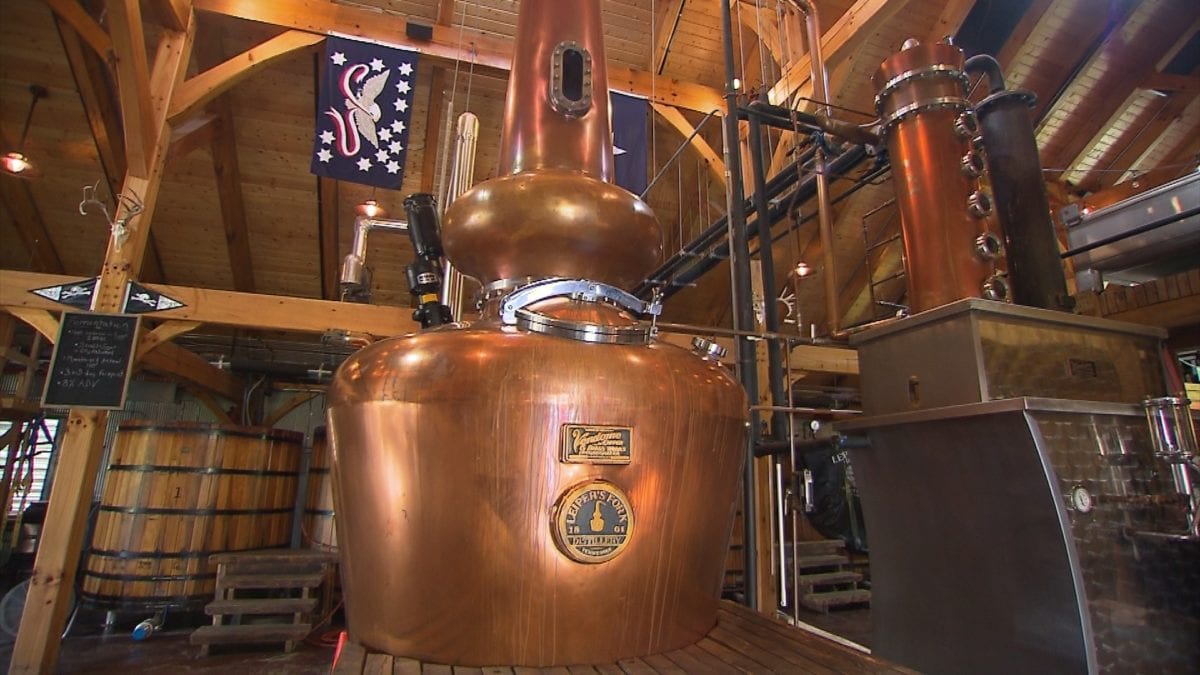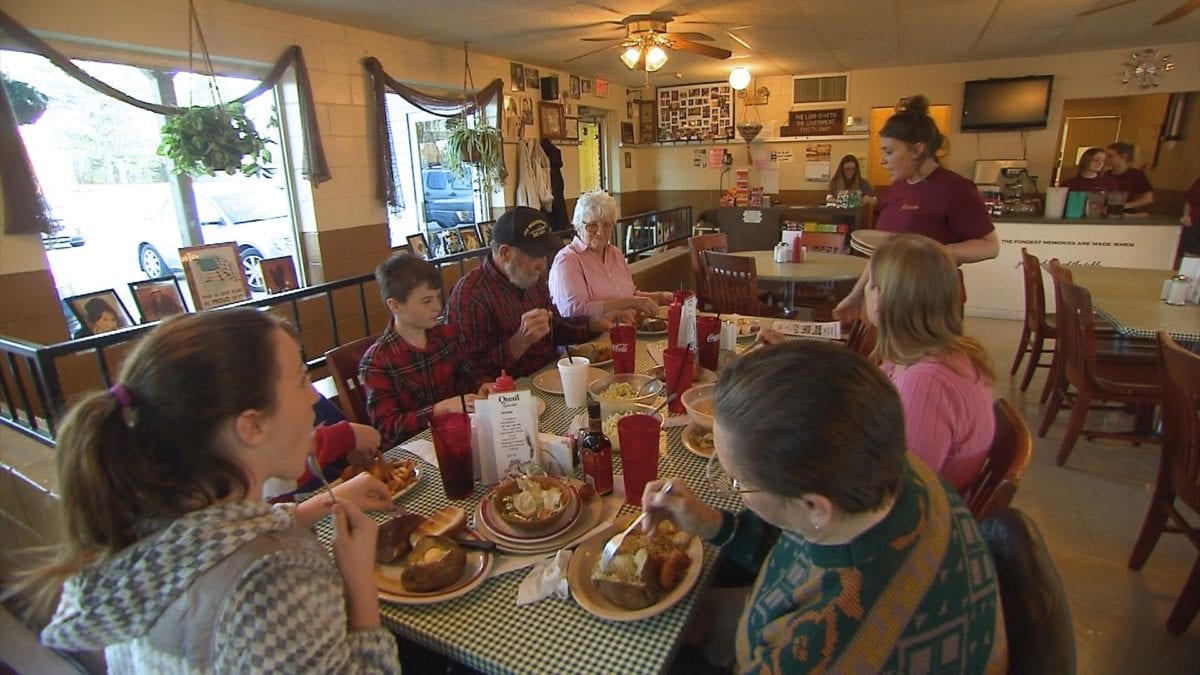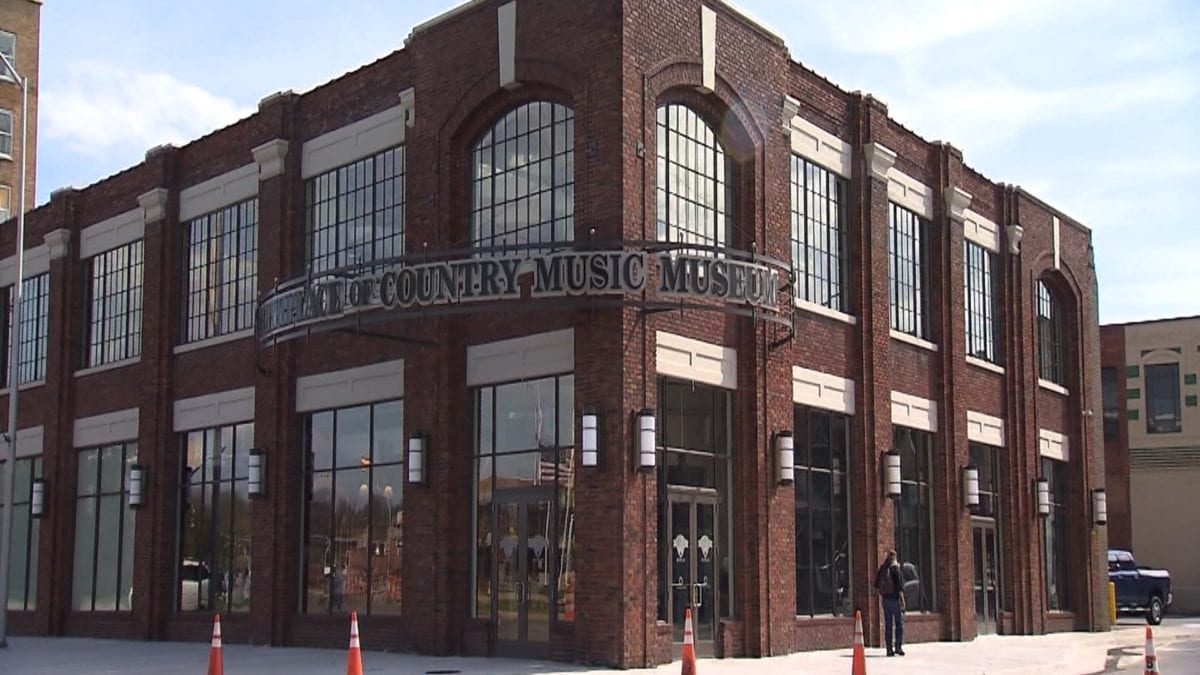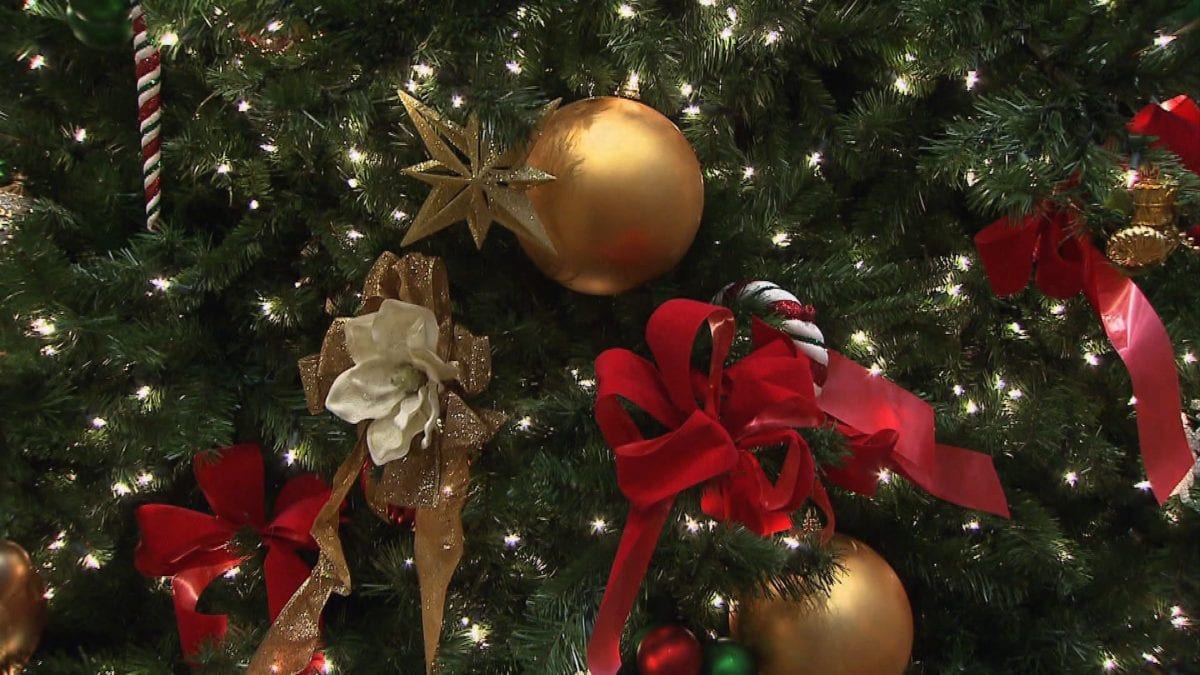Episode 3421
Don't have the PBS App? Click Here
Episode Transcript
- [Joe] This time on "Tennessee Crossroads", we visited a Leiper's Fork Distillery making spirits the old fashioned way. Then discover how catfish draws diners to a Burns, Tennessee restaurant. We'll head to east Tennessee's birthplace of country music, and finish up in a west Tennessee community named after an upcoming holiday. Hi everyone and happy holidays to you. I'm Joe Elmore. Welcome again to "Tennessee Crossroads". In our first story, we get a taste of Williamson County history from a glass of whiskey. And we'll visit the first legal distillery to open there since the early 1900s. As Laura Faber learned, the Leiper's Fork Distillery is making whiskey the old fashioned way. - [Laura] If this land could talk, it would have a colorful story to tell. 27 rolling acres outside Leiper's Fork in Williamson County have quite a history. A heritage that whiskey lovers are reclaiming and paying tribute to. It's an old industry made new again through a growing number of new artisan distilleries here and statewide. - [Kenneth] In 2009, a lot of forward-thinking legislators that came together, wrote some legislation and got it passed to allow distilleries back into Tennessee. So now you're seeing a burgeoning industry come back. - [Laura] Lieper's Fork Distillery is the first legal distillery in Williamson County since the early 1900s. The property is gorgeous, from the 5,000 square foot timber frame stillhouse to the circa 1820 cabin. It was deconstructed in Van Leer, Tennessee and rebuilt log by log, complete with a carving of the name of the man who originally built it. Through daily tours and tastings, visitors are greeted by tour guides like Pops and learn that Tennessee and whiskey have always gone hand in hand. - We make whiskey in what's called pre-prohibition style. - [Laura] That style can be traced back to Scottish and Irish settlers who came to this state. Lead distiller and proprietor Lee Kennedy says many came with whiskey know-how and literally the stills on their backs. - [Kennedy] There's a direct link from Scotland and Ireland over to the United States of those early settlers that came in and started producing whiskey, same method they use in Scotland and Ireland. They couldn't grow barley like they grew in Scotland and Ireland very well. So they use their native grains that they have here. They could grow rye. Rye whiskey was actually the first American whiskey to really be produced in any kind of bulk. And then corn based distillates, bourbon, Tennessee Whiskey made from corn. Corn is America's native grain. And so those guys took with their knowledge from Scotland and Ireland, and literally just adapted it to the new world. - [Laura] Census numbers show that in 1896, the distilling industry was the largest manufacturing industry in the state. 322 total distilleries. Of course, prohibition put a stop to that. But even after federal prohibition ended in 1933, most Tennessee counties voted against distillation, essentially instituting a prohibition here of legal whiskey manufacturing that lasted 100 years. But moonshine prevailed. Luckily for Kennedy, today he is able to legally make a living from his passion for whiskey. He built his first still at 16 years old, but now is fulfilling a dream. He left his career in financial services and opened Leiper's Fork Distillery in 2016. - [Kennedy] We're part of a kind of a Renaissance in Tennessee distilling. It's been going on since 2009. - [Laura] Even this property has a history soaked in whiskey. Colonel Henry Hunter once owned this land and hundreds of acres more in the surrounding area. - [Kennedy] When we came up with our first brand, well we decided to name that after him, he was a true Tennessee volunteer. We were kind of telling his story, which is kind of the story of a lot of early, early folks into middle Tennessee. - [Laura] Leiper's Fork Distillery is a small batch distillery, producing about 25,000 gallons a year. Inside the stillhouse, you find vats of bubbling mash in cypress fermentation tanks. There is also the beautiful 500 gallon swan neck whiskey still. - [Kennedy] That's 137 proof whiskey. This is what the whiskey looks like as it's coming off the still. 100% of the color is gonna come from the barrel once it enters the barrel, but this is what we call new make whiskey. - [Laura] And all those charred white oak barrels are an extremely important part of the process. Two core spirits are made here, Tennessee Whiskey and bourbon. - [Kennedy] Sugar maple charcoal is the only difference really between Tennessee Whiskey and bourbon. The way you really make Tennessee Whiskey, is you make bourbon in the state of Tennessee. And before that a whiskey goes into a barrel, we filter it through sugar maple charcoal. - [Laura] This Tennessee crossroads barrel has just been filled with whiskey. And the next step in the process, involves putting in this plug, made a poplar wood that will swell and completely seal the barrel. Once it's in there, this whiskey won't see the light of day for five to seven years. Are you ready? Here we go. Okay, that's satisfying. Since opening in 2016, the Colonel Hunters and the White Whiskey Natchez Trace brands have kept the distillery afloat. But November 2020 will be memorable for Kennedy and his staff. That's when the Leiper's Fork Flagship brand of whiskey comes out. The whiskey that flowed into those barrels years ago. Kennedy can't wait to see it at local restaurants, bars, and retail. - [Kennedy] I feel very blessed and fortunate to do what we do, in this industry to actually create something tangible. At the end of the day, we're making a physical product and we're using our local resources to do that. So we kind of look at our whiskey as an expression of our surroundings. - [Laura] Learning what it takes to transform a grain into a libation that whiskey lovers can pour into a glass and enjoy, and where those age old recipes came from, may be one of the most satisfying history lessons of all. - Thanks, Laura. Here's to you. When a successful restaurant is owned by one family for many years, well, I guess that family is doing something right. Dan Hickson has owned the Catfish Kitchen for more than 30 years. And we ask him what makes good catfish? He'll always say clean grease and the right temperature. Gotta be more to it than that. So Rob Wiles went to Burns, Tennessee to discover more of his secret. - [Rob] When you drive to a restaurant, usually there lots of choices around for you, but when you drive to the Catfish Kitchen, you are going to the Catfish Kitchen. Because it's out in the country, near the Burns community, near Dixon. It's a long drive, but worth it. - [Don] We're very remote and we've been very successful. The people in Dixon had been very good to us, as well as the surrounding counties. You can drive up in our parking lot on the Friday or Saturday night, and you're liable to see seven or eight counties represented. - [Rob] That's Don Hickson. "Hickson from Dickson," he calls himself, even though the restaurant he bought more than 30 years ago was really in Burns outside of Dixon, so Don took a little poetic license there with his name, but he's a straight talker when it comes to why people come from Dixon and just about everywhere else to get to his place. - Quality food, courteous service, personality. And I think that's the three ingredients that make a restaurant successful. - I got a sirloin medium-- medium well. - A'ight. - And a full order of filet. - [Rob] Now about the food. - [Don] We make a hush puppy that will melt in your mouth. Everything else we prepare here daily. We cook our own white beans, we cut our own Idaho potatoes. We make our own slaw, we make our own cocktail sauce, we make our own tartar sauce. I could say everything is just homemade. - [Rob] Homemade and good enough for a special occasion. - [Customer] I've come here for quite often and I love it. All the places in all the world, this is where I come on my birthday. - [Rob] Lots of the credit for the birthday worthy food goes to Scott Feltz. He's the manager now, but he started further down the ladder here years ago. - [Scott] I started here in '85 and 15 years old and grew up eating here with my family. My first job was here when Mr. Hickson bought the restaurant. Was here the night he come in to look at it for the first time. - [Rob] Well even though he's the manager, everybody here pitches in as needed. - [Scott] Not counting Don, we have three main cooks. We all kind of back and forth. We'll cook. All of us can work the grill if we need to. We have some one out, we'll go wash dishes. I'm not out. I don't get to be the luxury of a walk around manager to stand around and point and shake and talk. We all work and we work together. And so we all kind of take turns doing what we need to do to get the job done. - [Waitress] Ready? All right, whoever wants to start. - [Rob] Great food and great people to get it out of the kitchen and to the customers. - [Scott] We serve our food family style. It's like sitting at home with your parents, all the food on one big plate and you get to pull off what you need and dip it out. Unless, you know, someone asks for something different. And the service here is wonderful. Our waitresses, they're the face of the restaurant. And I say the cooks back there are kind of the backbone of the restaurant. 'Cause you ain't got good food, it doesn't matter. But the waitresses they take good care of the customers. It's a big family. Here sometimes it's dysfunctional. But for the most part, we have a good time, but we're also serious about our work. We have a big crew. Most of the people that's here have been here for several years. They don't come in for a week or two and leave. - Did you get a chance to enjoy this pretty weather today? - Yeah, everyday. - Everyday. - Any day. - Yeah. Just when we get up in the morning and put our feet on the floor, it's a wonderful day, isn't it? - That's right. - Good to see you. - [Rob] And the head of the family, why, Don, of course, likes to talk to his guests. Make sure they're full and happy. The guests like that attention. - [Customer] They're just as nice as they can be. The man that cooks the fish, he comes out and talks to you and ask how your meal was. So he's real cordial and I enjoy visiting with him, as much as I do his cooking. - [Scott] And a lot of things that people tell me, customers or people I see out and about talking about the restaurant, that's the one thing they always mention, is how the owner always walks around and speaks to the guests. And you don't see that anymore. - Last week I didn't feel like a young man. - I didn't either. I had to play with something else. - Good to see y'all. - Thank you. - You too. - You too. - [Rob] Don'll talk to his customers about almost anything. Now see, he doesn't really look at them as customers. - [Don] A lot of our customers just like family. - [Rob] There's that word again. And you know, you do get the family feel here, which people coming to the Catfish Kitchen definitely notice. - [Scott] We've had people come down from out of state, they come down here once or twice a month, when they're traveling, they'll stop. And a few from way off, they make a point when they're traveling once or twice a year, they'll come through. 'Cause they remember us. - [Rob] Yeah, once you've been here, it's pretty hard to forget the Catfish Kitchen. - Thanks Rob. Nashville may lay claim to the moniker Music City, but Bristol, Tennessee claims it was the actual birthplace of country music. Well, to back that claim, a museum now celebrates the year when some legendary artists were recorded For the first time. we made the long trip up there to take us a look. - [Joe] Bristol's birthplace of country music tells the story of a monumental year in American music history. 1927, that's the year RCA producer, Ralph Peer came to town, to capture rural mountain music for the first time ever. Music that was already part of Southern Appalachian culture. - [Renee] The people who are listening to the music and the people who are playing the music, they had a similar life experience. So what they were hearing in those songs, what they were singing about, they could all understand. They could relate to it. Renee Rogers moved back home to Bristol from the UK to take the job as curator. - [Renee] I think, the concept behind the museum is celebrating and exploring those 1927 Bristol sessions and why they were so significant, why they had impact and how that impact is continued, but also acknowledging their place within the history of early location recording sessions. It's almost like there was a perfect storm of events that came together. The recent change in the technology from the acoustic horn to the Western electric microphones. So you get much better quality recording. - The 1927 Bristol sessions introduced the world to legendary artists, such as The Carter Family. ♪ He's in the jailhouse now ♪ And Jimmie Rodgers. ♪ He's in the jailhouse now ♪ ♪ I told him once or twice ♪ ♪ To quit playin cards and shootin dice. ♪ - [Renee] The Carters and Jimmie Rodgers, who are known as the first family of country music and the father of country music, they hadn't recorded before. I mean, they performed, but they hadn't recorded. So all of that, and then Ralph Peer's expertise, all of it sort of came together to create this significant moment. - [Joe] Over the course of two weeks, Peer recorded 76 songs by 19 different acts. Including artists, Ernest the Stoneman and his band. Special recognition goes to a later music star and Bristol native Tennessee, Ernie Ford. - [Renee] He started his career here on WOPI as a radio station announcer back when he was in high school, actually. - Really? Before 16 tons? - Before 16 tons. Quite a while before 16 tons. - [Joe] Additional instruments use to make the music play a prominent role, along with the ever-changing ways used to hear the music. Visitors can explore the history and heritage through a variety of interactive exhibits. You can be the singer on an old time recording session. Or... - I got my phone zone now, what do we do next? - [Joe] Here you can be the recording engineer and mix the various music tracks. You can take a pew in this chapel and discover ways that faith played a role in shaping country music. - [Renee] This film is one of my favorites, actually. - [Joe] There are multiple film experiences to take in, including the panoramic immersion theater, where you've got room to buck dance, if you so desire. Of course, part of the task is to share the heritage of traditional music with younger generations. And according to Renee, it's working. - [Renee] We had a kid who came through here who was obsessed with Mother Maybell Carter, and really wanted to learn how to play like her. And he was like seven years old. - [Joe] In addition to the ongoing country music collection, there are rotating exhibitions featured throughout the year. On our visit, there was this one, all about Tennessee manufacturing. Actually the birthplace of country music is more than a brick and mortar museum. There's also a radio station that strings both traditional and contemporary country music, as well as Americana. Plus an annual festival full of music, performed by artists from several generations. Executive director, Leah Ross sums it up this way. - [Leah] We're trying to not only celebrate that past, but tell everyone the effect it has on in how it's still strong today. - There are quite a few Tennessee communities that once had a thriving heyday that faded away without a trace of history of how things used to be there. One such community is called Christmasville, believe it or not, near McKenzie in West Tennessee. Ken Wilshire pays a visit and discovers there's something special about this place, especially this time of year. - [Ken] It's simply amazing what the mind can do when it hears or sees a word or sign. Like this one near McKenzie. It points us towards Christmasville. Well, I don't know about you, but I would think to most people, just the name of a town called Christmasville brings warm, cozy holiday visions of a village covered with brightly colored lights, decorated trees, holiday foods, and more. Well, we just had to find it. And if it's about Christmas, there's just no one who might know where it is or what it looks like better than third or fourth graders. Like these students at West Carroll County Elementary School in Trezevant. We can't find Christmasville and we're hoping that somebody can tell us what to look for. - Well, I'm not really sure where Christmasville might be, but I can probably think it's probably joyful and has a lot of stuff like big Christmas trees, pretty good place probably. - [Boy] First thing you probably see in Christmasville will be snow. And I wouldn't be surprised to find the sleigh. - [Ken] So with these colorful directions in mind, we enlisted the help of Dale Cooper. - This is pretty much the original site. This is where the boats would come upstream. - Oh yes sir. Yeah they would bring supplies in from the Mississippi River-- - [Ken] Dale was born and raised in the Christmasville community. And if anyone knows about the town, it's Dale. It does still hold a place in many people's heart, because so many people have ties or connections. In its day, it was quite a quite a bustling place I'm sure. Actually the Christmas in Christmasville comes from John Christmas McLemore. - [Ken] And John Christmas McLemore was one of the areas first settlers and landowners. And despite several more Christmas related accounts of how the town got its name, most historians feel it was named after him, but this hasn't stopped some vivid imaginations. - [Boy 2] In Christmasville road, you can find a lot of Christmas trees. Well, you might find some snows. - And children playing outside in the snow. And a lot of people hanging up Christmas lights and stuff. - [Boy 2] And you might find Santa Claus's house. - [Ken] Really? In Christmasville? Why was that I thought he was in the North Pole? - I'm just fooling with you. You can't find Santa Claus house in Christmasville. - Ho, ho, ho! - [Dale] A lot of supplies that came into West Tennessee interior came through Christmasville. That's why there's Christmasville road in Jackson, there's one in Paris, there's a Christmasville road goes to Dresden. There's one to Trenton. So all of the major county seats in this area had a road that came from Christmasville. - [Ken] This is the south fork of the Obion River. It's as far as the boatman could push, pull or paddle their boats up stream, here at Christmasville. But it's also the point from which this community could have reached the entire world. - [Dale] There were several stores and shops there in Christmasville as well as churches. And I'm sure many other towns in west Tennessee had the same fate as Christmasville, that they were carved out of the wilderness early, but then they had a relatively short life span due to the fact that the railroads missed them. And the people that lived here, a lot of the people sought fame and fortune in other places, and so they moved on to greener pastures so to speak. - [Ken] For many reasons, Christmasville never survived as a town. Only a small community remains. Why is this place even on the map? Well, from what we found, it's about the spirit of Christmasville. It has a relationship to Christmas as the season and the spirit, as well as Christmasville, the village and bustling town that helped this area to grow out of a wilderness. - [Ken] It's my guess that may be a leisurely drive down this quiet, peaceful stretch of road called Christmasville, or just the thought of town named Christmasville, might give us all some time to reminisce about holidays past. Remember our family and friends and help us to relive the Christmas spirit every day of the year. And maybe we should say thanks to those early American settlers who named this place Christmasville. But if you really could go there? - I would like, celebrate Christmas with my friends and family, have a good time on Christmas day. And it's all not about the presents. It's about spending time with each other. - Okay, with that, we put the wraps on another edition of "Tennessee Crossroads". Thanks for joining us. Hey, why don't you check out our website, Tennesseecrossroads.org follow us on Facebook, of course. And I'll see you next time.
Tennessee Crossroads
December 17, 2020
Season 34 | Episode 21
This week on Tennessee Crossroads, Laura Faber visits the Leiper's Fork Distillery. For more than 30 years, The Catfish Kitchen has been attracting happy diners to Burns, TN. Joe Elmore explores a Bristol, TN museum called The Birthplace of Country Music. Ken Wilshire travels to a community near McKenzie to learn the story of Christmasville, one of the earliest towns in West Tennessee.




